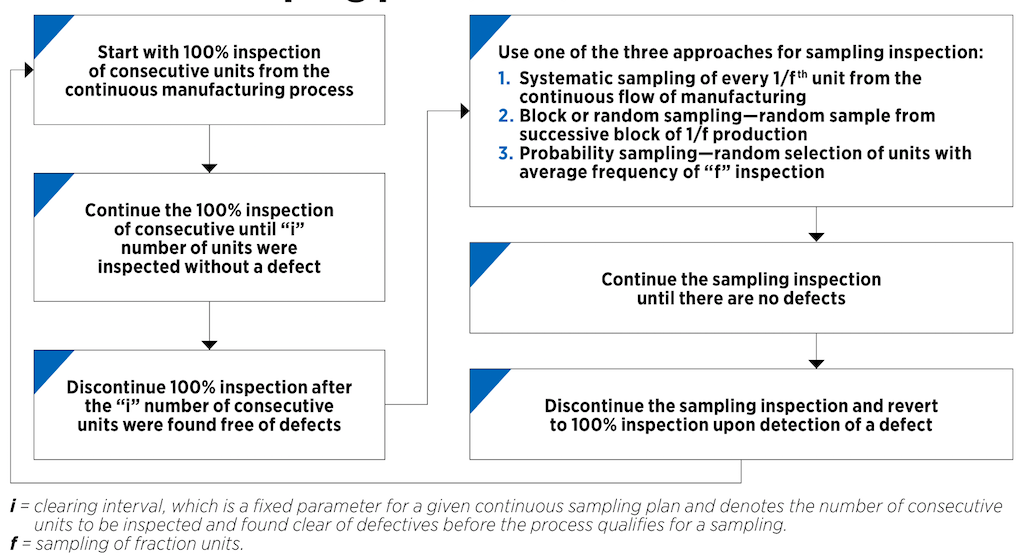If you purchase products from Chinese factories, I guess you have used acceptance sampling based on the concept of AQL. In simple terms, an inspector draws samples from the whole batch, checks them, and the batch is either accepted or rejected.
There are different types of sampling plans, as I wrote before, including this one:
“Continuous sampling” is the best plan when products are made individually in a continuous flow. It makes no sense to pick samples inside each “batch”. It consists of several phases:
- At the beginning, each piece is checked (that’s the “screening”).
- After a certain number of pieces were found satisfactory, only certain pieces are checked randomly (that’s the “sampling”).
- If a piece is defective: back to screening.
I found a nice graphic representation of that type of sampling plan in this month’s Quality Progress magazine.
It strikes me as a great approach for a manufacturer to keep a close eye on quality.
This plan is specified in US Militari Standard (1235C). I have NEVER seen it in use in a Chinese factory.
Obviously it is adapted to certain situations but not others:
- Where pieces are made 1 by 1 or maybe 5 by 5, but not in batches of 1,000. Good right after an assembly job, not right after a baking process.
- Where mistake-proofing hasn’t been put in place and there are known sources of issues.
- Where people are not likely to ‘game the system’ and declare fake numbers in order to save time and look good (this is a serious issue in most Chinese factories).
For a convenient online calculator, go to SPC online.

No comments:
Post a Comment